Are you feeling a bit overwhelmed by the details of your shipping service agreement? You're not alone! Many of us find ourselves puzzled by the fine print and specific terms. In this article, we'll break down everything you need to know to clarify your shipping service agreement, so you can feel confident in your choices. Read on to discover how to navigate these complexities effortlessly!

Sender and receiver information
The shipping service agreement requires precise sender and receiver details to ensure accurate package delivery. The sender's address must include a full name, residential or business address (including street number, street name, city, state, and postal code), and contact number, typically including area code. The receiver's information needs similar clarity, comprising their complete name, exact delivery address, and phone number to facilitate smooth communication during the shipping process. In cases where international shipping is involved, additional details such as country and customs information become essential for adherence to regulations.
Reference to original agreement
Shipping service agreements often include specific terms regarding delivery timeframes, costs, and liability. Clarification of these elements ensures both parties understand their responsibilities. For instance, delivery timelines can vary depending on distance, method of transportation, and external factors such as weather conditions. Costs may include additional fees for expedited shipping or customs duties for international agreements. Liability clauses often outline responsibilities in case of lost or damaged goods, with specific benchmarks to determine reimbursement. Having clear references to the original agreement helps to avoid disputes, ensuring smooth operations in logistics management.
Specific clauses needing clarification
Shipping service agreements often contain specific clauses requiring clarification to ensure mutual understanding. For instance, the "Delivery Timeframe" clause outlines expected shipping durations, usually offering ranges like 2-5 business days for domestic deliveries. The "Liability Limitations" clause details the carrier's responsibilities in case of loss, damage, or delays, frequently capping liability at the declared value of goods, which can typically be up to $100 unless additional insurance is purchased. The "Payment Terms" section specifies when payments are due, often requiring prepayment or payment within 30 days of invoice receipt. Additionally, the "Force Majeure" clause explains circumstances preventing performance surmounting to events like natural disasters or political unrest. Understanding these terms ensures transparency and prevents disputes during the shipping process.
Proposed amendments or questions
Shipping service agreements often require clarity on terms and conditions to ensure understanding between parties. Key elements include delivery timelines, which can vary significantly depending on regional logistics, such as expedited shipping options that promise delivery within 1-3 business days in domestic zones but may extend to weeks for international destinations. Rates should specify weight brackets and handling fees. Additional clauses related to liability and insurance coverage must be addressed, particularly concerning lost or damaged items during transit. It's crucial for parties to clarify protocol for communication regarding shipment status, ideally using tracking systems that provide real-time updates. Understanding cancellation policies is also essential, especially since some agreements may impose penalties for late changes. These elements and their nuances shape the overall effectiveness and reliability of the shipping service agreement.
Contact details for follow-up
A shipping service agreement clarification often necessitates precise communication and contact information to ensure smooth follow-up. Clear and accurate contact details, such as the appropriate email address (e.g., servicesupport@shippingcompany.com) and phone number (e.g., +1-800-555-0123), are vital for both parties. These details should include the direct contact person, indicating their role (e.g., Customer Service Manager) and availability hours (e.g., weekdays from 9 AM to 5 PM EST). Moreover, clarification of shipping terms, such as delivery timelines (e.g., standard 5-7 business days), tracking procedures (e.g., tracking number emailed post-dispatch), and return policies (e.g., items returnable within 30 days), will facilitate effective resolution of any issues during the shipping process.
Letter Template For Shipping Service Agreement Clarification Samples
Letter template of shipping service tracking and communication guidelines.
Letter template of shipping service geographical limitations specification.
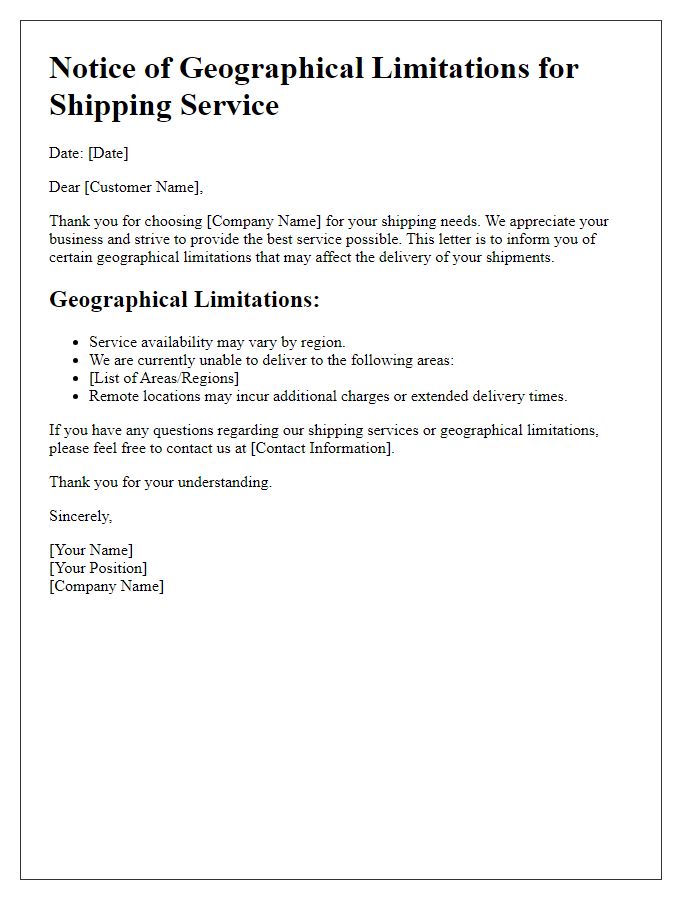

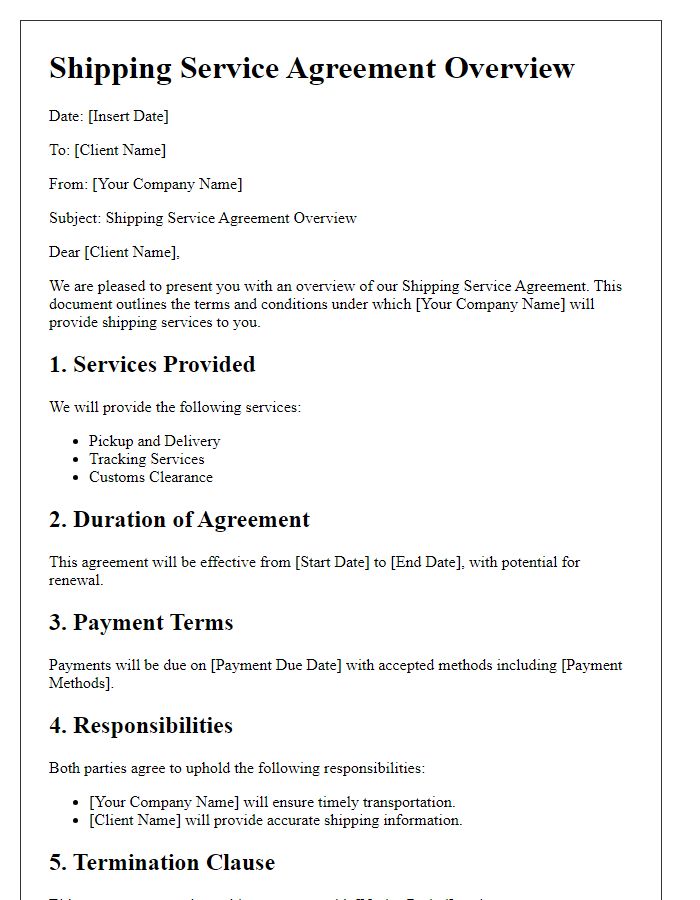

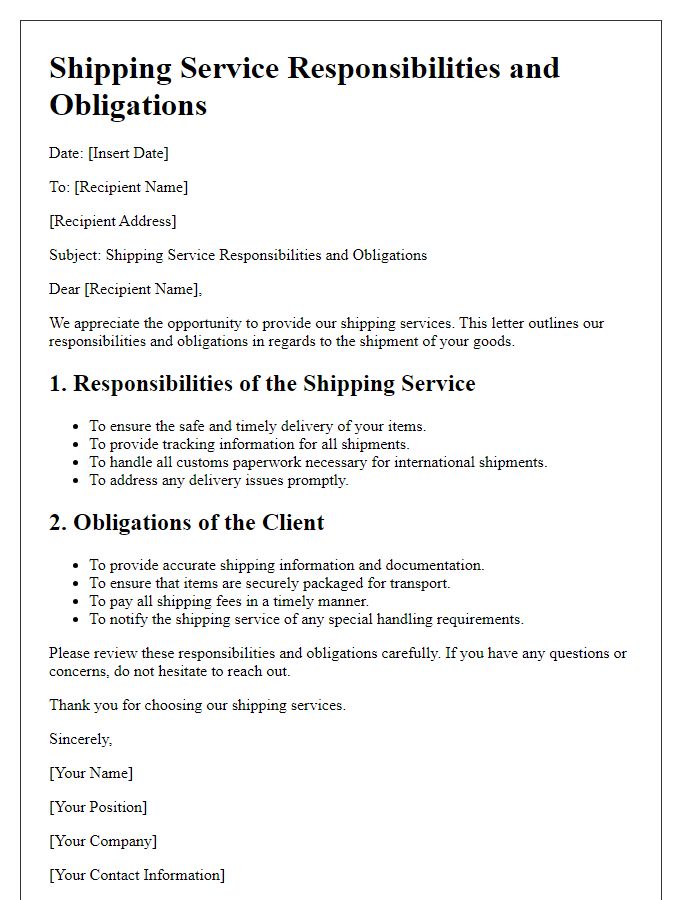
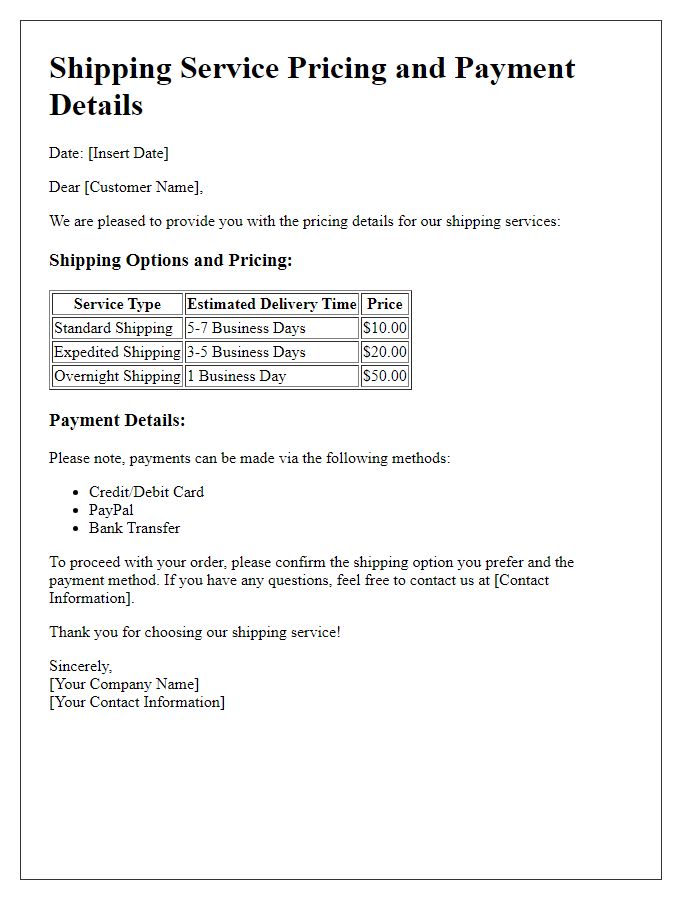
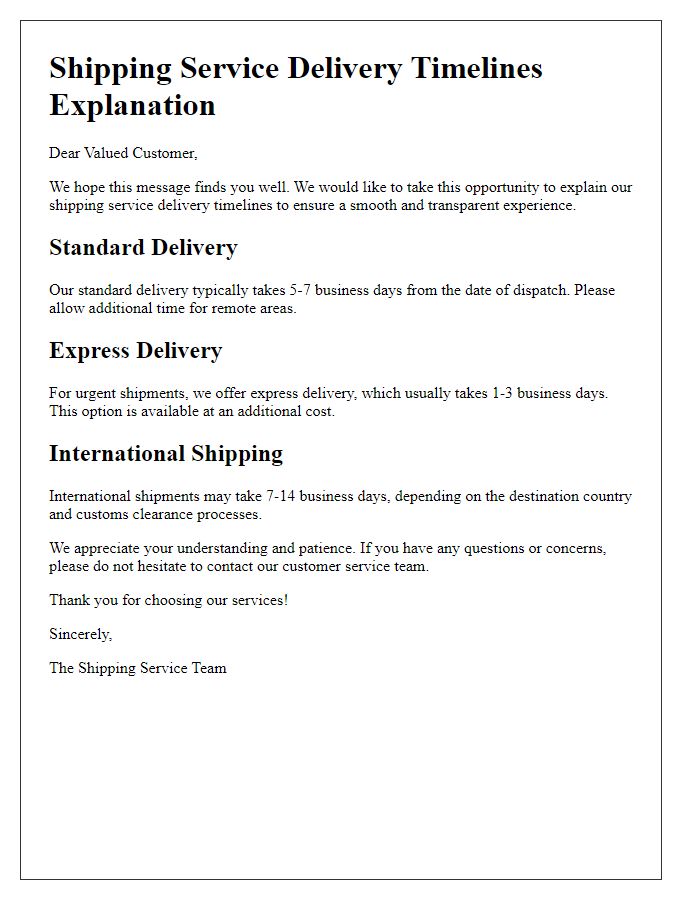

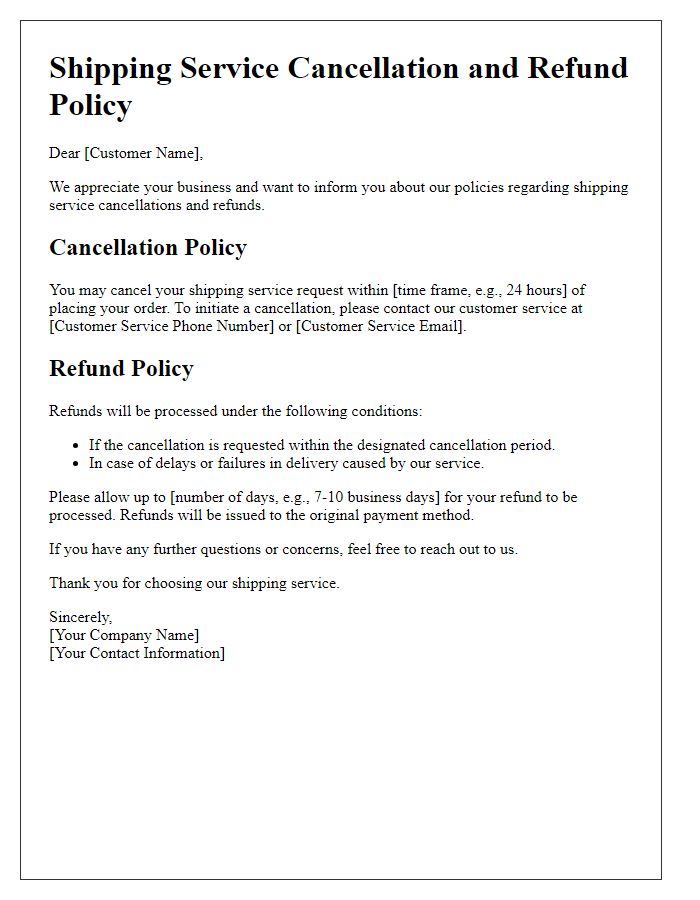
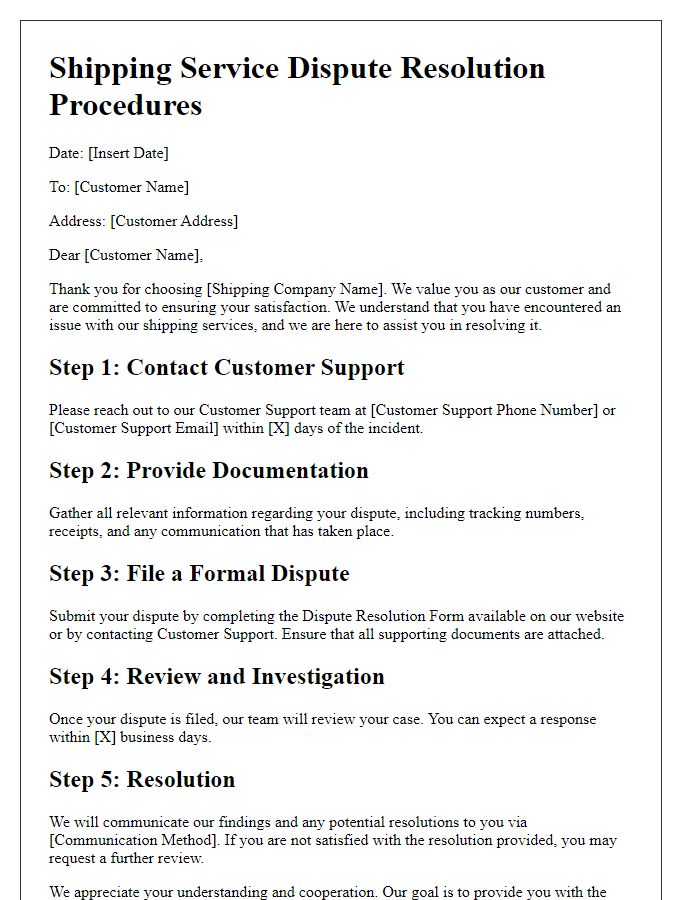


Comments